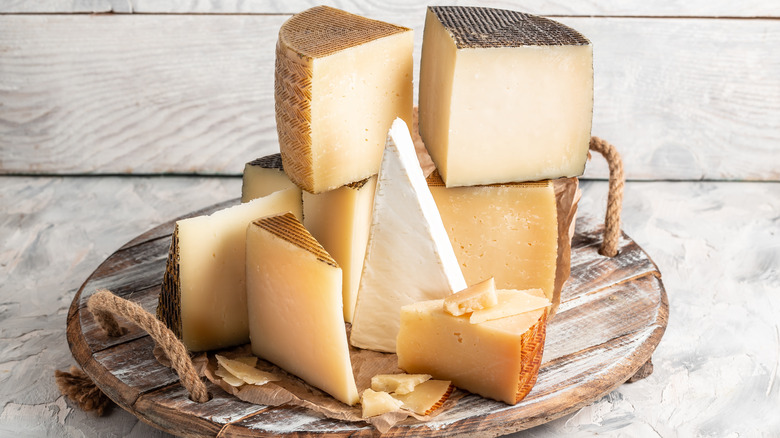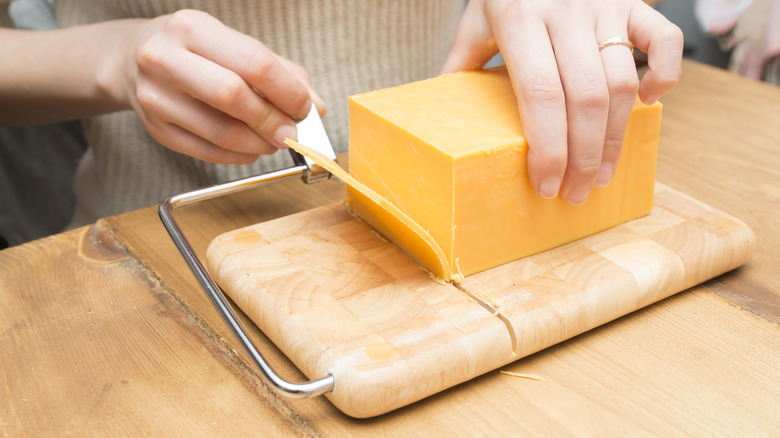Why Some Cheeses Are Easier To Slice With Wire
Charcuterie boards are in the spotlight, and it's easy to understand why: Various deli staples and accouterments are meticulously assembled on a platter and shared among friends — what's not to love? Of course, if you've ever attempted to make a cheese board, you may have realized that a Pinterest-worthy presentation isn't as easy to assemble as it seems: Heart-shaped strawberry slices end up looking like blobs; salami roses are cumbersome to make, and picking them apart is a logistical nightmare; and your board has just about reached maximum capacity when you realize you've forgotten to add crackers.
And then there's the cheese. How can something so easy to eat be so difficult to slice? You set out with the best intentions to produce pristine, perfectly portioned pieces, yet the result is a mess of uneven, crumbly chunks. "That's alright," you tell yourself with a laugh and a shrug, "it's rustic!" Yet, that little voice in your head wonders where exactly things went wrong. Is there a better way? The answer is "yes." Enter the cheese wire: This kitchen tool is far superior to a cheese knife when cutting semi-hard and hard cheeses.
Cheese wires minimize friction
Nine times out of ten, whatever cooking woe you are experiencing has a scientific solution, and slicing cheese falls into that 90%. The source of this particular struggle: Friction. Knives designed to slice these dairy products are generally dull. Therefore, if you're cutting hard or semi-hard cheese, you must apply significant pressure to get that edge to slide down. This squashes the block, making it denser and harder to slice. It gets more difficult the further you push the blade down.
Using a sharper knife isn't a great solution, either. Yes, it requires less pressure to make that initial cut. But you must remember that hard cheese isn't just dense — it's sticky, too. As a blade slices into a thick block of the dairy product, it sticks to it and creates friction. This requires, once again, that more pressure be applied to push the knife through, which can create cracks in the cheese below. You're back to square one.
In contrast, a cheese wire has a far smaller surface area than a flat-surfaced blade; this means there is less space for the cheese to stick to your kitchen tool and, therefore, less friction. The result is a smooth-as-butter cut and a perfect, pristine piece every time. So, invest in a wire cheese slicer if you want to take the next step in crafting incredible charcuterie boards. Physics is on your side.

